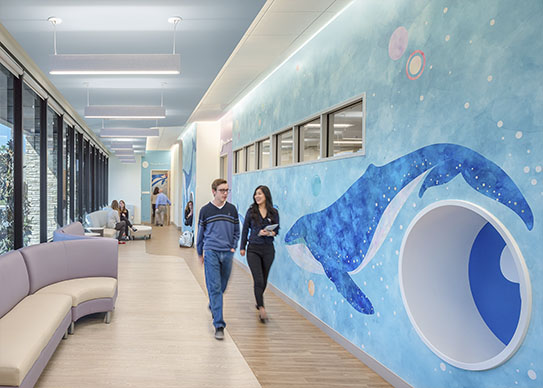One population for prioritized focus and investment when it comes to mental health is our PK-12 schools.
This past year has been extremely challenging for children and teenagers. Most children have lost nearly an entire year of in-person schooling. They’ve all experienced increased isolation to varying degrees. Many have lost loved ones or watched family members become ill. The daily news cycle has been tumultuous. There is data in Colorado and nationwide that reveals increased food insecurity, child abuse and more.

These realities are impacting children who were already in need of mental health support pre-pandemic. One in six American children ages 2–8 years had a diagnosed mental, behavioral, or developmental disorder, according to the Centers for Disease Control and Prevention. Additionally, about 3 in 4 children ages 3-17 years with depression also have anxiety and almost 1 in 2 have behavior problems.
PK-12 schools should be a frontline resource for these children, as these are places they frequent that can make a significant impact on helping children feel safe and supported. Before the pandemic, mental health resources within schools were fairly limited. The American School Counseling Association recommends one counselor for every 250 students, yet the average is one counselor responsible for approximately 482 students. Furthermore, the reality is that some schools, especially those that lack funding or are in under-resourced districts, do not have school counselors at all or share one counselor across multiple locations.
Gone are the days where school counselors mainly focused on helping students navigate academic pressures or college applications. Now counselors and similar workers must also handle extreme personal and social issues for students—all amplified in the coming decade for children who have suffered to varying degrees over the last year. Providing dedicated, thoughtfully designed spaces for these resources can help make students feel safe and confident in receiving care without stigma and allow counselors to know that their important work is not an afterthought in the school system.

Fortunately, there’s positive movement on this front across Colorado. Here’s a snapshot of current realities:
● The Colorado Association for School-Based Healthcare offers support for districts looking to create health clinics, noting they are an effective way to improve students’ access to care, particularly in low-income communities where students may have social, economic and geographic barriers to resources.
● There are currently 69 school-based health centers (SBHCs) in Colorado (most located in the Denver/Boulder area). Recently, the Colorado Health Institute (CHI) identified Colorado public school districts that would most benefit from creating a new SBHC and found the biggest need for access to care at schools that serve predominantly students of color, schools in rural Colorado, and schools in underserved urban parts of Colorado, particularly Pueblo and Adams counties.
● Cherry Creek School District in Denver has announced plans to build a dedicated mental health care facility that all students may access. This was funded by a bond initiative, indicating that voters agree this is a necessary component of school that supports overall student success.
Identifying the need and where it is greatest is a huge first step. Now, as school districts look to create new and different kinds of spaces for mental health, they should pull from the extensive evidence-based research that healthcare designers already reference. At baseline, there are key decisions about how to best locate these spaces, ensure access to nature and light, orient care spaces, ensure safety, and utilize colors or graphics that can have significant impact on reducing stigma and supporting positive outcomes.
While our children are resilient, they cannot be expected to thrive and grow without addressing their growing mental health needs accelerated by the pandemic. Schools are an ideal place to address this next challenge and stem further damage. While better academic performance is one possible outcome, improved social and emotional well-being are also clear needs at this moment. Those of us in education and healthcare design and real estate should advocate for approaches that support mental health being included in our work.
With growing scientific knowledge of neurodiversity, our ideas, designs, investments and interventions will create a variety of stigma-reducing spaces and programs that support mental health for all. We can define what the intersection of education, play and mental health looks like. Now it is time to make an impact for the future well-being of our communities.
This article was originally published in the Colorado Real Estate Journal in early May.




